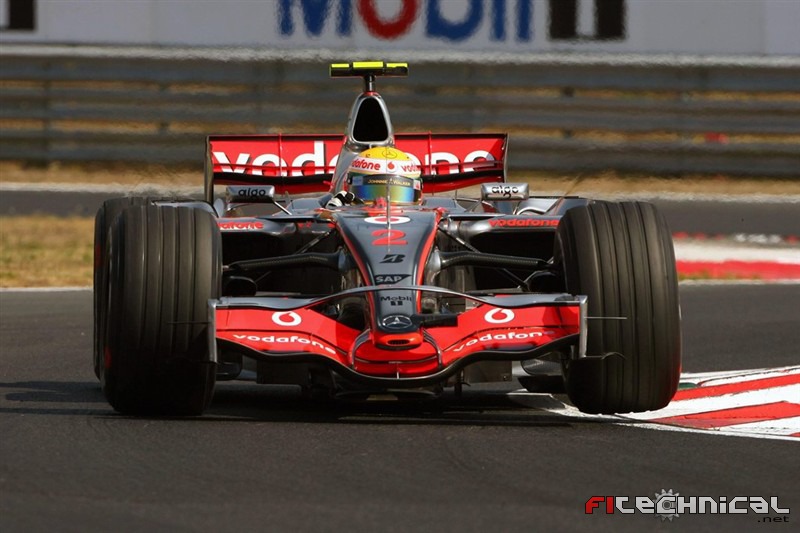Yeah, the first co*k carTrocola wrote:The first non-pen*s car. Thanks god.
Looks great
Btw
@ScarbsF1: Not sure how Lotus make the twin tusk arrangement meet the reg "a single external cross section of more than 9000mm² "

Yeah, the first co*k carTrocola wrote:The first non-pen*s car. Thanks god.
Looks great


It's also possible that both fingers belong to the crash structure. But why do you think that the Lotus solution is better than the others? The rules demand that you the cross section 50mm behind the tip has to have a minimum cross section of 9000mm², that's the cross section of the right finger. The second finger increases the cross section from 50mm behind the tip onwards and also doubles the turbolences and weight.CBeck113 wrote:Interesting that they made the nose asymetrical, but I can't believe that the FIA let them get away with it (i.e. aerodynamic function of the vanity panel, which must be the shorter side of the nose) ... there will be many changes before the second test, since this solution will be much better than the Williams & McLaren solutions.
how to make a 2015 f1 car. make babiesouter_bongolia wrote:I would love to see this lotus lock a McLaren nose to nose. That'd be a nice view.
And I don't think it's guaranteed that you'll get more airflow through under the car with this design anyway.Blanchimont wrote:It's also possible that both fingers belong to the crash structure. But why do you think that the Lotus solution is better than the others? The rules demand that you the cross section 50mm behind the tip has to have a minimum cross section of 9000mm², that's the cross section of the right finger. The second finger increases the cross section from 50mm behind the tip onwards and also doubles the turbolences and weight.CBeck113 wrote:Interesting that they made the nose asymetrical, but I can't believe that the FIA let them get away with it (i.e. aerodynamic function of the vanity panel, which must be the shorter side of the nose) ... there will be many changes before the second test, since this solution will be much better than the Williams & McLaren solutions.
Nope, it appears lotus are exploiting a loop hole here. There's nothing in the crash structure regulation that says that it must have a *single* cross section. Only that it's total cross sectional area must be 9000mm².Blanchimont wrote:It's also possible that both fingers belong to the crash structure. But why do you think that the Lotus solution is better than the others? The rules demand that you the cross section 50mm behind the tip has to have a minimum cross section of 9000mm², that's the cross section of the right finger. The second finger increases the cross section from 50mm behind the tip onwards and also doubles the turbolences and weight.CBeck113 wrote:Interesting that they made the nose asymetrical, but I can't believe that the FIA let them get away with it (i.e. aerodynamic function of the vanity panel, which must be the shorter side of the nose) ... there will be many changes before the second test, since this solution will be much better than the Williams & McLaren solutions.
15.4.3:beelsebob wrote:There's nothing in the crash structure regulation that says that it must have a *single* cross section. Only that it's total cross sectional area must be 9000mm².
Nope.Blanchimont wrote:15.4.3:beelsebob wrote:There's nothing in the crash structure regulation that says that it must have a *single* cross section. Only that it's total cross sectional area must be 9000mm².
... It must have a single external cross section, in horizontal projection, of more than 9000mm² at a point 50mm behind its forward-most point. ...
Better use this one: http://www.fia.com/sites/default/files/ ... -12-09.pdfbeelsebob wrote:Nope.Blanchimont wrote:15.4.3:beelsebob wrote:There's nothing in the crash structure regulation that says that it must have a *single* cross section. Only that it's total cross sectional area must be 9000mm².
... It must have a single external cross section, in horizontal projection, of more than 9000mm² at a point 50mm behind its forward-most point. ...
15.4.3:
It must have a minimum external cross section, in horizontal projection, of 9000mm2 at a point 50mm behind its forward-most point.
http://argent.fia.com/web/fia-public.ns ... _20.07.pdf